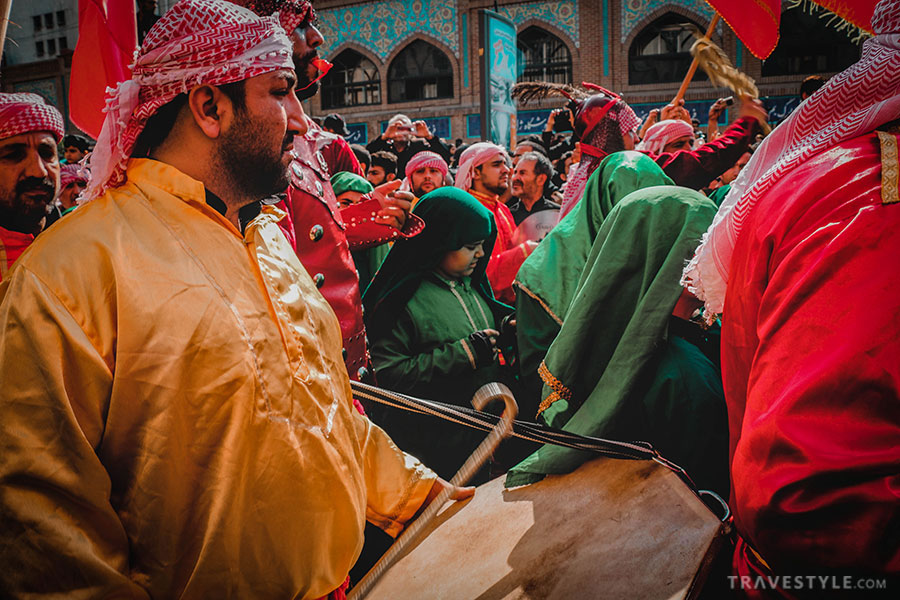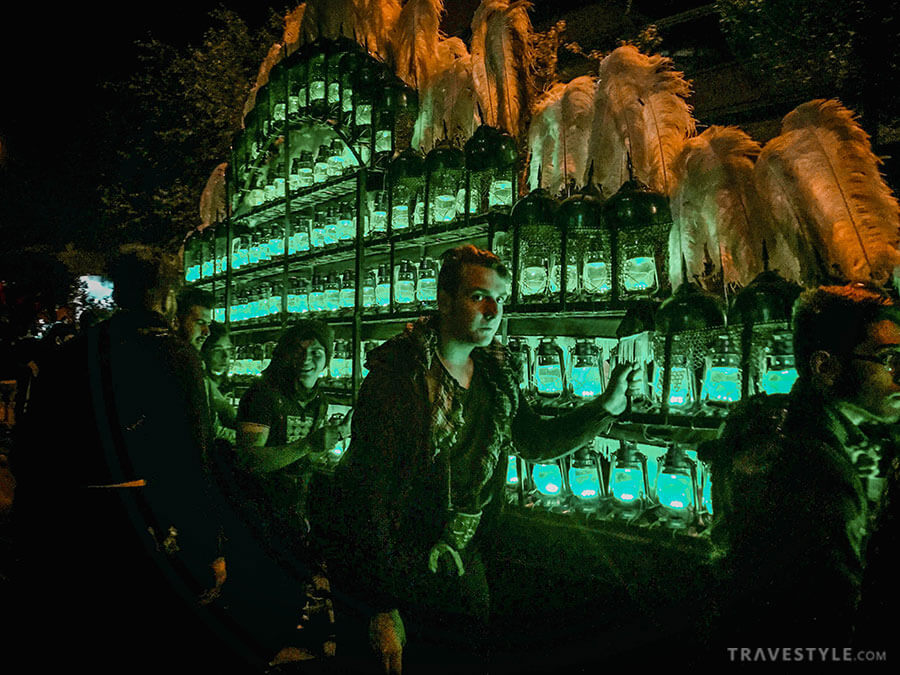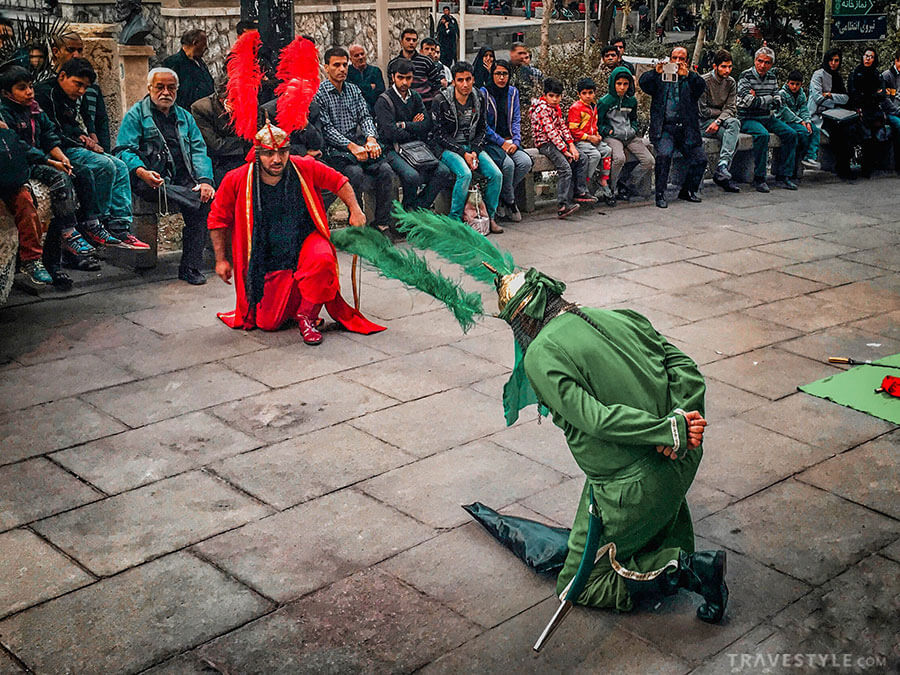Witnessing Ashura in Iran is an unforgettable experience. While traveling to Iran during Muharram could mean closed attractions, it gives you the chance to participate in the biggest ceremony of Shia Muslims. A ceremony that’s so big, you’ll hardly get to witness anything like it elsewhere in the world.
When is Muharram?
Muharram starts on September 1st but the main ceremony takes place on the 9th and 10th of September also known as Tasooa and Ashura
Explaining Ashura and Muharram in Iran
Muharram is the first month of the Arabic calendar which is completely different from the Persian calendar. However, due to our tie to the Arab world regarding Islam, Muharram in Iran is taken very seriously. In fact, since Iran is a majority Shia country, Muharram in Iran is much more of a big deal compared to the Arab world.
Muharram is a month of mourning. It’s when the big battle of Karbala happened. When the prophet’s grandson, Imam Hossein, and his family were killed and it’s when Shia Muslims and Sunni Muslims went separate ways.
Every single year, Iranian Muslims commemorate the events of Ashura in all sorts of ways and everything takes a peak on the day of Ashura.
The history of this event is too long and complicated to put into a few words. There are different perspectives and contradictions in the story but just to give an idea of the factors that caused the battle of Karbala and consequently the martyrdom of Imam Hossain and his 72 companions you need to know a few simple things.
If this is your first time in Iran, read our ultimate Iran travel guide

What happened on the day of Ashura?
Following the death of Prophet Muhammad, there were rivalries in who should succeed the prophet and be the next caliphate. Shias believed the prophet had made it nice and clear that his son-in-law ‘Ali’ was to succeed him. And that the Quran and his Ummah (his family) were left to guide Muslims.
Sunnis, however, rejected Ali’s claim and believe that the Quran and Sunnah (teaching of the prophet) was sufficient. Here’s a focal point in the division of Muslims into two sects of Shiite and Sunnism. Imam Ali was assassinated and since his eldest son Imam Hassan (2nd Imam for Shias) did not have enough support he agreed to make peace with his contemporary caliphate. He was also suspiciously martyred.
This brings us to the second son of Imam Ali, Hossain who refused to swear allegiance to Yazid (the caliphate) and so the battle of Karbala occurred.
What’s so tragic about the battle of Karbala?
The battle of Karbala occurred in 680 AD. That’s ages ago! Yet the commemoration is held bigger year after year on the day of Ashura in Iran. There are reasons why this battle is considered so unique amongst Muslims:
- The two sides of the battle were extremely uneven. Imam Hossain and his 72 companions in front of an army of thousands.
- Women and children were not spared. Many were killed, including 6-month old Ali Asghar the son of Imam Hossain. Others left were humiliated.
- Water was banned from Hossain and his clan days before the battle. Many children died from thirst. Many Shia Muslims still salute Imam Hossein when they drink a glass of water.
- The paradigm of Karbala is pretty much based on the resistance of evil, praising freedom and standing up for justice. It has become an inspiration to resist oppression in any form.
- While the battle had ended by noon, the aftermath was even more devastating. Actions such as bringing the head of Imam Hossain to a feast held by the components and other sorts of humiliation makes the event a lot more dramatic.
- Zaynab (Imam Hossain’s sister) and Zayn-ol-Abedin (the succeeding Imam) were among the few survivors. Their subsequent leadership of the resistance, speeches, and mourning with the aim to enlighten the people on what had truly happened are some of the strongest facts that Shias hold on to.
- There were many other tragic details in the event which are normally the subject of recitations and songs.
- The culture of mourning for heroes such as Ashura in Iran goes back to pre-Islamic times when people mourned for the death of Siavash. So this was nothing new to Iranians at the time.
What to expect in the Ashura ceremony?
The mourning starts from the first day and comes to its emotional highpoint on the 10th day called ‘Ashura’. This is the actual day of the battle. Then everything slows down until 40 days after the martyrdom. On the 40th day also known as ‘Arbaeen’ many embark on a pilgrimage to Karbala, Iraq where the event took place originally.
Mourning congregations
During these days assemblies called Hossainia which are erected specifically for the mourning of Imam Hossain, mosques and even some private houses hold ceremonies. The ceremony concludes of men and women lamenting and grieving for the death of Imam Hossain. This is sometimes taken to the streets with the beating of drums and men chanting “Ya Hossain” as I explained earlier.
Tazieh
In some streets plays or ‘Tazieh’ is performed re-enacting the battle of Karbala and the suffering of Imam Hossain and his supporters by the hands of Yazid. Yazid and his troops are presented wearing red and the descendants of the prophet in green.

Nazri
Many families cook food or what we call ‘Nazri’ which means food for donation. They distribute this food among the poor or anyone else (including you!). There are stalls installed on the streets where you get free drinks, normally tea or milk and sometimes food. Almost everyone will eat Nazri during the day of Ashura in Iran instead of cooking their own food. Nazri is believed to be holy and is sometimes given to the sick as a cure. Those who cook or pay for the food to be cooked do this out of devotion to God and Imam Hossain. It’s also an event many tourists like to take part in and families are always open to receiving extra help.




Sham-e Ghariban (The night of the deserted)
The night of Ashura is known as the night of the deserted. On this night people light candles and gather to immortalize the tragedy of the orphan children abandoned in Karbala after the battle had ended.
Do’s and Don’t of Muharram in Iran
Shedding blood is forbidden in the whole month. This is nothing symbolic. Blood money increases by one-third during Muharram according to the law.
During the month of Muharram people refuse to hold big parties or weddings as respect to Imam Hossain. Many even refuse to listen to music or avoid entertainment in the first 10 days. Get in a taxi during these days and it’s likely that the music is some sort of recitation of the tragedy of Karbala in a mournful way with a lot exaggeration.
Doing business on the day of Ashura in Iran is considered disrespectful. All shops and attractions are closed on the 9th and 10th of September.

What to wear on the day of Ashura?
The whole country goes black especially on the day of Ashura. If you’re joining an event even if only for the sake of observance it’s respectful to either dress in black or darks. Neutrals are fine but red and brights are to be avoided. They symbolize the evil in anything related to the battle of Karbala.
Where to go to experience Ashura in Iran?
While Ashura is a sad event, I’ve seen many tourists who were fascinated by it. If you get lucky you might even get to participate in the cooking or distribution of the food. If not, there’s always free food.
Each province and city will have its own rituals when it comes to Muharram. There’s even a big ceremony on the first Friday of Muharram held in Tehran Mosalla. It’s when new mothers gather with their infants dressed like Ali Asghar, the 6-month old son of Imam Hossain who was killed on that day.
If you’re in Tehran, the Imam mosque in the grand bazaar holds one of the biggest events. But be prepared for a lot of photographers and crowds like you’ve never seen before. The ceremony and the Tazieh start after the noon prayers. Later the men and women involved in the performance continue the mourning within the Karbalayiha Hosseinieh just north of the bazaar. Women and men will have separate sections and the rituals and crowds can get pretty intense. The Hosseinieh of Karbalayiha belongs to Iranian Arabs and Iraqis who moved to Iran a long time ago.



Other main squares of Tehran like Tajrish sq. are good places to join the event.
Sadat Akhavi Tekyieh is one of the oldest Tekyiehs in Tehran where the ceremonies of Muharram have been held for decades. They have ceremonies every morning from the first day of Muharram until the day of Ashura. You’ll have to get there super early if you’re going on the day of Ashura to beat the crowds. Try being there before 9 am to get a spot. Make sure you stay until noon if you want to see the best part. The atmosphere of this place is extremely unique and great for getting some photos.

Yazd and Taft are also very popular destinations to see the mourning of Ashura as the locals have their own customs added to the commemoration. Smaller villages such as Masouleh, Bijar, Abyaneh, and Natanz have their own traditions.
For example, Ashura in Boushehr and Khuzestan are very musical. Music plays an extremely important role in the mourning ceremonies of Muharram for the people Khuzestan, Bushehr and generally southern Iran.
But don’t worry, there’s literally a ceremony in every neighborhood and you won’t be missing out on anything where ever you are.
Even though the grieving of Ashura in Iran is a religious event, today it is rooted deeply within Iranian culture. It is not unique to religious people or even Shia Muslims. Iranian Christians, Jews, Zoroastrians, and even Sunnis take part in it many times. Although the younger Iranian generation is a lot less religious and many are not practicing Muslims, you will witness that Ashura has become a part of their national identity.
If you’d like to read more on the subject, there are lots of books available online.
You can check out WHO IS HOSSAIN website which is an organization inspired by the values of Imam Hossain that works internationally.
—————-
Disclaimer: I’m in no way an expert on the history of Karbala. What I depict is simply from my own observation and readings.





This site is really very well done and I enjoyed browsing through just now. Keep up the good work.
infomative and wonderful done pages – big compliments – would enjoy if you will continue !
That was amazing , enjoyed every sentence ! Thanks
You are absolutely welcome 🙂
خیلی خیلی عالی
اجرتون با امام حسین (ع)
ممنونم
Dear Martin,
I understand it. I have one question can ask please, I want to know that what does mean that shedding blood is forbidden and I don’t see the blood in these pictures for Ashura Day?
Thank you.
Best regards,
Paul
Hello Paul. I meant that you will have to pay double the normal blood money if you kill someone during the month of Muharram. It’s somehow a system to prevent crime during the holy month.
I loved the post. Thanks for writing it down.
However, it’s probably useful to explain that Ashoura is not always in September. It changes as the lunar calendar circulates so people would know when to come and see it next year.
Hi! Thank you. I always update the post with the new dates but perhaps it’s probably better to note that. 😉
Thanks a lot for giving me an understanding of the history and celebration of this important time in Iran.
Easy to read, meaningful pictures and a good length to get a good understanding.
You’re absolutely welcome 🙂